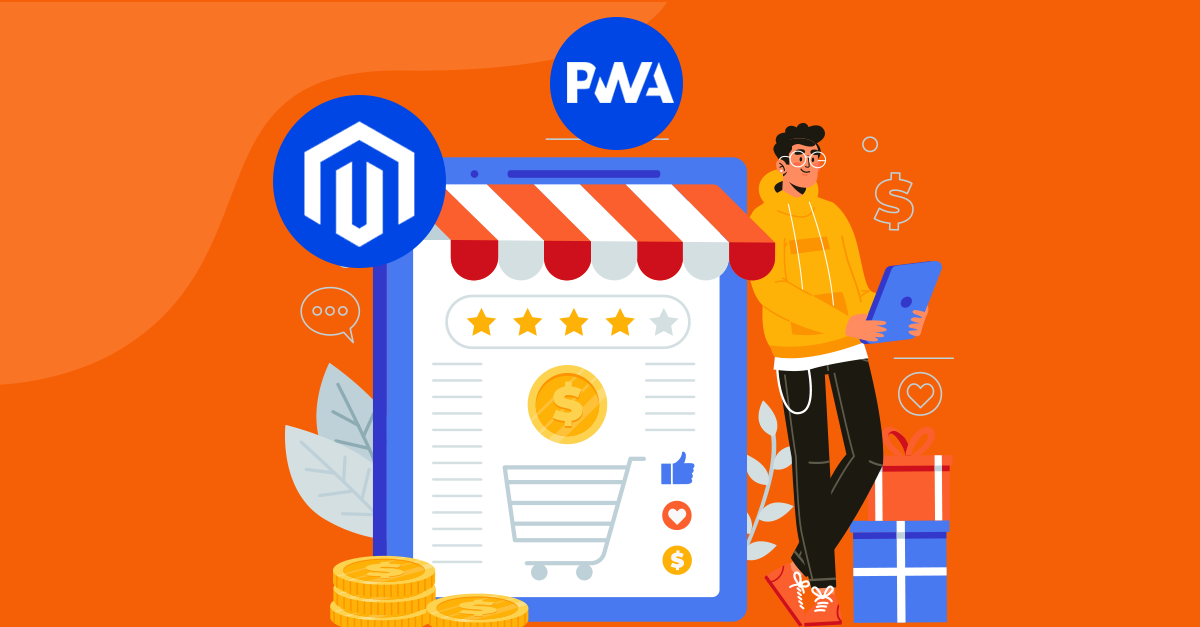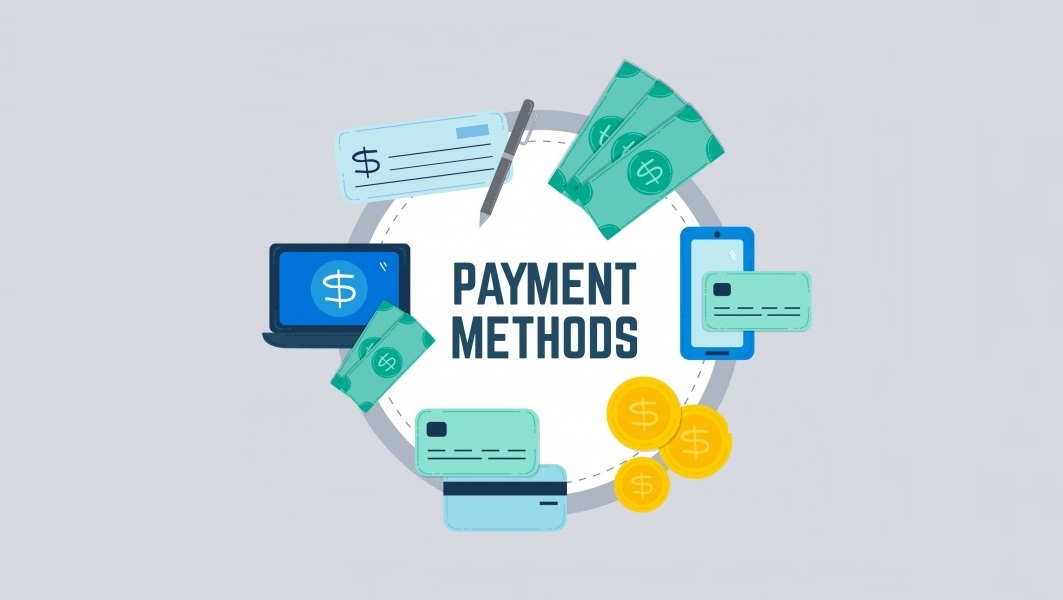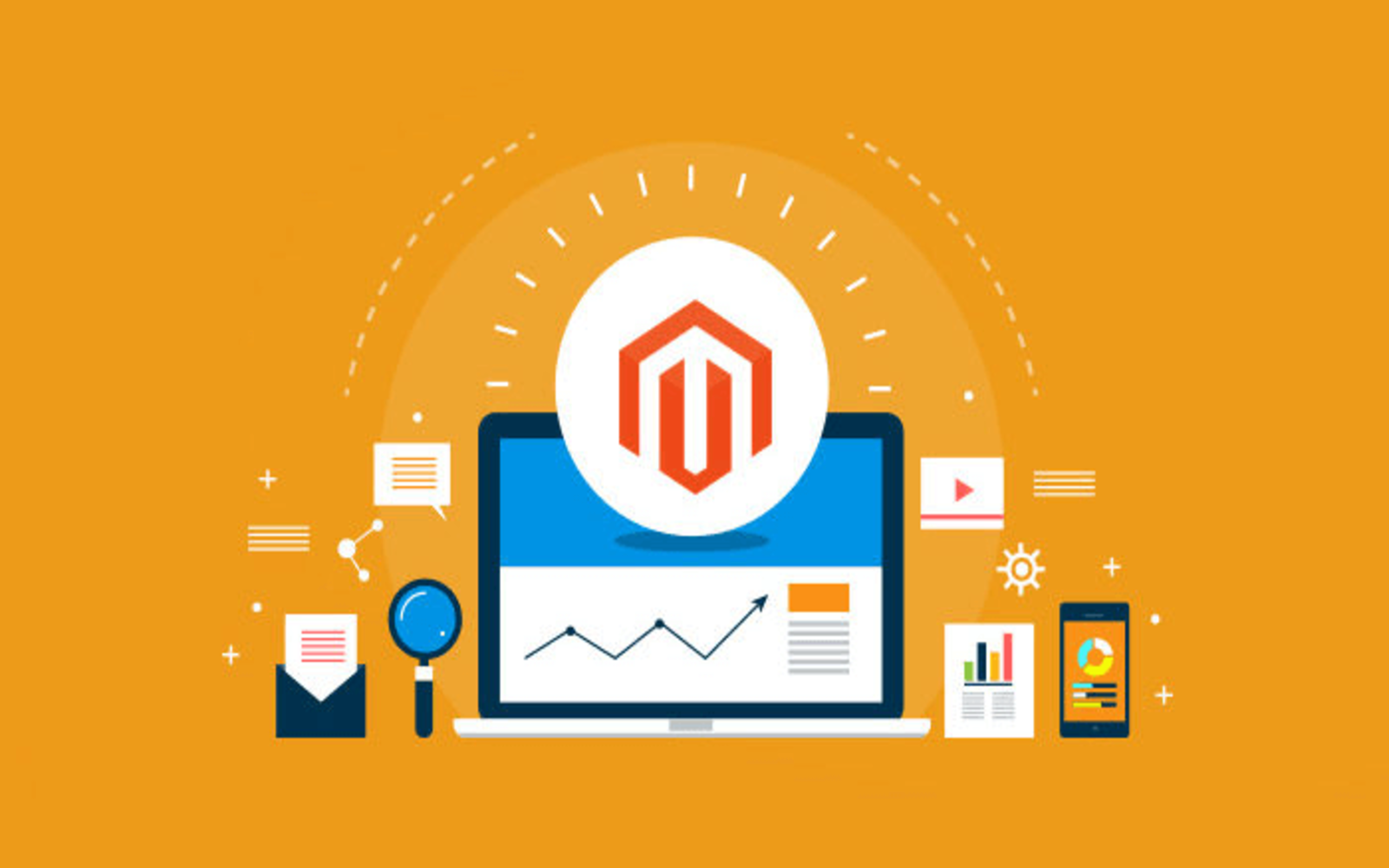The checkout process is a critical step in the customer journey, where seamless user experience, speed, and security are paramount. With the growing demand for fast and convenient online shopping experiences, businesses need to adapt and optimize their checkout process to meet customer expectations. Magento, one of the leading eCommerce platforms, has embraced the power of PWAs to revolutionize the checkout process, offering a modern, intuitive, and highly customizable way for customers to complete their purchases. In this article, we delve into the world of Magento PWA checkout, exploring its benefits, key features, user experience, integration with the Magento backend, and more. So, let’s dive in and explore the exciting world of Magento PWA checkout, and how it can enhance your online store’s checkout process for a seamless and delightful customer experience.
Table of Contents
Overview of Magento PWA Checkout
PWA checkout is a modern approach to the checkout process in eCommerce that combines the best of both web and app technologies. Magento, one of the leading eCommerce platforms, offers a PWA checkout solution that provides an enhanced user experience, improved performance, and seamless integration with the Magento backend.
Benefits of Magento PWA Checkout
PWA checkout offers numerous advantages for eCommerce businesses and their customers.

Here are some key benefits of implementing Magento PWA checkout:
- Enhanced User Experience: Magento PWA checkout provides a seamless, fast, and engaging user experience. The checkout process is optimized for mobile devices, ensuring a mobile-first approach that caters to the growing number of mobile shoppers. With smooth transitions and instant updates, customers can easily add products to their cart, enter shipping information, choose payment options, and complete the checkout process with minimal steps, leading to higher conversion rates and improved customer satisfaction.
- Faster Page Loading Speed: PWA technology enables faster page loading speeds compared to traditional web applications. Magento PWA checkout leverages feature like offline mode, caching, and background data synchronization, allowing customers to browse and complete the checkout process even in low or unstable network conditions. This results in reduced cart abandonment rates and improved overall performance, providing a competitive advantage in today’s fast-paced eCommerce landscape.
- Improved Flexibility and Responsiveness: Magento PWA checkout provides the flexibility to create customized and personalized checkout experiences tailored to different customer segments. Businesses can easily make changes and updates to the checkout process without requiring app store approvals or complex deployments. This enables quick adaptation to changing market demands, customer preferences, and business requirements. Additionally, Magento PWA checkout is responsive across various devices and platforms, ensuring a consistent and seamless checkout experience for customers regardless of the device they are using.
- Easy Integration with Magento Backend: Magento PWA checkout integrates seamlessly with the Magento backend, allowing businesses to leverage their existing Magento eCommerce infrastructure. The integration enables real-time synchronization of product information, inventory, pricing, and order data between the PWA checkout and the Magento backend, ensuring accurate and up-to-date information for customers. This simplifies the development and maintenance process and reduces the overhead of managing multiple systems, resulting in cost savings and operational efficiency.
- Enhanced Security: Magento PWA checkout adheres to industry-standard security best practices, including SSL encryption, data encryption, and secure payment gateways, ensuring the safety and security of customer information. Magento PWA checkout also reduces the risk of security vulnerabilities associated with traditional web applications, such as cross-site scripting (XSS) attacks and cross-site request forgery (CSRF) attacks, providing a secure and trustworthy checkout experience for customers.
- Lower Total Cost of Ownership (TCO): Magento PWA checkout offers a cost-effective solution compared to developing and maintaining separate native apps for different platforms. With Magento PWA checkout, businesses can create a single codebase that can be used across multiple devices and platforms, resulting in reduced development, maintenance, and deployment costs. Additionally, the ease of updates and changes without requiring app store approvals or complex deployments further reduces ongoing operational costs, resulting in a lower total cost of ownership (TCO) over time.
Key Features of Magento PWA Checkout
One of the key features of Magento PWA checkout is its ability to work offline or in low network conditions. It utilizes features like caching, background data synchronization, and offline mode, allowing customers to continue browsing and complete the checkout process even when there is no internet connection or in unstable network conditions. This ensures that customers can complete their purchase regardless of their location or network availability, reducing cart abandonment rates and improving overall performance.

Magento PWA checkout also offers flexibility and customization options for businesses. It allows businesses to create personalized and customized checkout experiences tailored to different customer segments or business requirements. The checkout process can be easily updated and modified without requiring app store approvals or complex deployments, providing agility and adaptability to changing market demands and customer preferences.
The integration of Magento PWA checkout with the Magento backend is seamless, enabling real-time synchronization of product information, inventory, pricing, and order data. This ensures that customers have access to accurate and up-to-date information during the checkout process, improving the overall customer experience.
Security is a top priority in eCommerce, and Magento PWA checkout adheres to industry-standard security best practices. It includes SSL encryption, data encryption, and secure payment gateways to protect customer information and transactions. Additionally, Magento PWA checkout reduces the risk of security vulnerabilities associated with traditional web applications, providing a secure and trustworthy checkout experience for customers.
Understanding the User Experience (UX) in Magento PWA Checkout
The Smooth and Seamless Checkout Process
A smooth and seamless checkout process is a critical aspect of a positive user experience (UX) in any eCommerce platform, including Magento PWA.

Here are some key factors that contribute to a smooth and seamless checkout process:
- Minimal Steps: A checkout process with minimal steps is crucial to avoid customer frustration and cart abandonment. Magento PWA checkout is designed to have a streamlined flow with as few steps as possible, allowing customers to quickly progress from adding products to the cart to completing the purchase. Each step should be clear and easy to understand, with minimal form fields to fill in and minimal clicks required to move to the next step.
- Clear Navigation and Call-to-Action Buttons: Clear navigation and call-to-action (CTA) buttons are essential in guiding customers through the checkout process. Magento PWA checkout should have intuitive and visible navigation, clearly indicating the current step and the progress made so far. CTAs should be prominent, using clear language that indicates the intended action, such as Add to Cart, Proceed to Checkout, Place Order, etc. This helps customers easily understand how to move forward in the checkout process.
- Responsive and Mobile-Friendly Design: With the increasing use of mobile devices for online shopping, it is crucial for Magento PWA checkout to have a responsive and mobile-friendly design. The checkout process should adapt seamlessly to different screen sizes and devices, ensuring a consistent and optimized experience for customers, whether they are using a desktop, tablet, or mobile device. Form fields, buttons, and other elements should be easily tappable and clickable on mobile devices.
- Autofill and Address Validation: Autofill and address validation features can significantly speed up the checkout process and reduce errors. Magento PWA checkout should leverage modern web capabilities to offer autofill options for common form fields such as name, email, phone number, and address. Address validation features can help customers validate and correct their shipping addresses, reducing the chances of delivery delays or errors.
- Real-Time Updates and Error Prevention: Real-time updates on cart totals, discounts, and shipping costs during the checkout process can help customers have a clear understanding of their purchase. Magento PWA checkout should provide real-time updates as customers make changes or additions to their orders. Additionally, error prevention measures such as clear validation messages, confirmation of order details before submission, and visual cues for required fields can help customers provide accurate information and avoid potential delays or mistakes.
Responsive and Mobile-first Design
With the increasing use of mobile devices for online shopping, it is essential to prioritize mobile user experience to cater to the needs of mobile shoppers.

Here are some specific considerations for a responsive and mobile-first design in Magento PWA checkout:
- Mobile-Optimized Layout: The layout of the checkout process should be optimized for mobile devices, with clear and easy-to-tap buttons, form fields, and other elements. The design should be responsive, ensuring that it adapts well to different screen sizes and orientations, providing an optimal experience for mobile users.
- Simplified Forms: Forms should be simplified for mobile users, with minimal form fields and large input fields that are easy to tap with fingers. Avoid using complex form fields that may be difficult to use on small screens. Utilize mobile-friendly input options, such as date pickers, drop-down menus, and checkboxes, to make it easy for mobile users to input information.
- Thumb-Friendly Buttons: Buttons and CTAs should be designed to be thumb-friendly, as mobile users typically use their thumbs to tap on buttons. Buttons should be large enough, with ample spacing between them, to ensure that users can easily tap them without accidentally tapping on other elements.
- Mobile Payment Options: Mobile payment options, such as digital wallets (e.g., Apple Pay, Google Pay) and other mobile payment gateways, should be integrated into Magento PWA checkout. This allows mobile users to quickly and securely complete their purchase using their preferred mobile payment method, without having to enter lengthy credit card details.
- Mobile-Friendly Error Handling: Error handling should be optimized for mobile users, with clear and concise error messages that are easy to read on small screens. Error messages should be displayed prominently and clearly indicate the issue and how to resolve it, helping mobile users quickly correct errors and proceed with the checkout process.
- Mobile-First Testing: Prioritize mobile-first testing during the development process to ensure that the checkout process works seamlessly on mobile devices. Test the checkout process on various mobile devices and browsers to identify and fix any issues or glitches that may impact the mobile user experience.
Personalization and Customization Options
Personalization and customization options are another important aspects of the user experience (UX) in Magento PWA checkout. By allowing users to customize their checkout experience and providing personalized options, you can create a more engaging and convenient checkout process.

Here are some ways to incorporate personalization and customization options in Magento PWA checkout:
- Saved Payment and Shipping Information: Allow users to save their payment and shipping information for future purchases. This saves users the hassle of entering their information every time they check out, providing a seamless and convenient experience.
- Address Autocomplete: Incorporate the address autocomplete feature that suggests addresses as users type, based on their previous orders or saved addresses. This speeds up the checkout process and reduces errors in address input, enhancing the user experience.
- Guest Checkout vs. Account Creation: Provide users with the option to check out as a guest or create an account. Some users prefer to check out quickly without creating an account, while others may want to create an account for future benefits such as order tracking and personalized offers. Giving users the option to choose provides a personalized checkout experience based on their preferences.
- Customized Checkout Flow: Allow users to customize their checkout flow by choosing the steps they want to skip or bypass. For example, some users may want to skip the billing address step if the shipping address is the same, or they may want to skip the shipping method selection if they have a preferred shipping option saved in their profile. This customization option makes the checkout process more efficient and tailored to the user’s preferences.
- Personalized Product Recommendations: Incorporate personalized product recommendations in the checkout process based on the user’s browsing and purchase history. This can help users discover relevant products and increase the average order value, enhancing the personalization of the checkout experience.
- Order Summary and Confirmation: Provide a clear and concise order summary and confirmation page that displays all relevant details, including the order total, shipping information, and payment details. This gives users a final overview of their order before they submit it and helps build trust and confidence in the checkout process.
Key Components of Magento PWA Checkout
Add to Cart and Cart Management
The Add to Cart and Cart management functionalities are crucial components of the Magento PWA checkout process. The add-to-cart functionality allows customers to add products to their shopping cart with a single click. In Magento PWA, the Add to Cart button should be prominent, clearly visible, and easily accessible on product pages. It should also provide feedback to customers when a product is successfully added to the cart, such as displaying a confirmation message or updating the cart icon with the updated item count.

Once products are added to the cart, customers should be able to manage their cart easily. Magento PWA should provide functionalities such as viewing the cart contents, updating the number of products, removing products from the cart, and applying discounts or coupons. The cart management features should be responsive, and user-friendly, and allow customers to easily modify their cart contents as needed.
Address and Shipping Information
Address and shipping information are critical components of the checkout process in Magento PWA. Here’s some important information about these components:
- Address Input: Magento PWA provides a user-friendly and responsive address input form that allows customers to enter their shipping and billing addresses easily. The form should be designed with a mobile-first approach, ensuring that it is optimized for small screens and touch inputs. It should include features such as auto-suggestion, auto-fill, and validation to minimize errors and simplify the address input process.
- Address Validation: Address validation is an essential feature that helps ensure that customers enter accurate and valid shipping and billing addresses. Magento PWA integrates with address validation services, such as USPS, FedEx, or UPS, to validate addresses in real-time and provide feedback to customers if an address is incomplete or invalid. This helps prevent shipping delays, order returns, and customer frustration due to address errors.
- Address Book: Magento PWA allows customers to save their shipping and billing addresses in an address book for future purchases. This feature enables returning customers to easily select a saved address during checkout, saving time and effort in entering the same address information repeatedly. The address book also allows customers to edit, delete, and manage their saved addresses for maximum convenience.
- Shipping Options: Magento PWA offers various shipping options during the checkout process, based on the retailer’s shipping policies. These options may include standard shipping, expedited shipping, or store pickup. The available shipping options are presented clearly to customers with accurate shipping costs, estimated delivery times, and other relevant information. Customers can select their preferred shipping option, and the order total is updated accordingly.
- Shipping Rules and Restrictions: Some retailers may have specific shipping rules and restrictions based on factors such as shipping destination, order total, or product type. Magento PWA handles these rules and restrictions effectively and communicates them clearly to customers during the checkout process. For example, if a retailer does not ship to certain countries or has a minimum order value for free shipping, customers are notified and guided accordingly.
Payment Options
Payment options are a critical component of the checkout process in Magento PWA.

Here’s an overview of how Magento PWA handles payment options:
- Multiple Payment Methods: Magento PWA supports a wide range of payment methods, including credit/debit cards, PayPal, Apple Pay, Google Pay, and other popular payment gateways. Customers can choose from the available payment methods based on their preferences and convenience. The payment options should be presented clearly and prominently during the checkout process, with relevant icons and descriptions to help customers make informed choices.
- Secure Payment Processing: Magento PWA ensures secure payment processing by integrating with secure payment gateways and complying with industry-standard security protocols, such as PCI DSS (Payment Card Industry Data Security Standard). This ensures that customers’ payment information is encrypted and protected during transmission and storage, safeguarding against potential security breaches and fraud.
- One-click Payments: Magento PWA allows customers to save their payment information securely for future purchases, enabling one-click payments for returning customers. This feature provides a convenient and frictionless checkout experience, as customers do not need to re-enter their payment details every time they make a purchase. However, it is crucial to implement robust security measures, such as tokenization, to protect the stored payment information.
- Payment Confirmation and Feedback: After customers have completed the payment process, Magento PWA provides clear and immediate confirmation of the payment status. Customers should receive a confirmation message and/or email with details of the payment transaction, including the amount paid, the payment method used, and the order summary. This helps customers verify that their payment was successful and provides reassurance that their order has been processed.
Order Review and Confirmation
Order review and confirmation is a critical step in the checkout process of Magento PWA. After customers have provided their shipping address, selected their payment method, and reviewed their order details, the order review and confirmation step allow them to review and confirm their order before finalizing the purchase. Here’s an overview of how Magento PWA handles order review and confirmation:
Magento PWA presents a clear and detailed order summary to customers during the review step. This includes a summary of the products or services being purchased, along with their prices, quantities, and any applicable discounts or promotions. The order summary should also include any additional charges, such as shipping fees or taxes so that customers have a complete overview of their order and the total cost.
Magento PWA allows customers to edit their order details during the review step. This includes the ability to modify the quantities of products in the cart, remove products, or update the shipping address. Customers should be able to make changes easily and intuitively, with clear instructions and prompts to guide them through the process.
Technical Implementation
Integration with Magento Backend
Integration with the Magento backend is a crucial aspect of Magento PWA checkout. It allows for seamless communication and synchronization between the frontend PWA and the backend Magento system.

Here are the key components of integration with the Magento backend in the context of Magento PWA checkout:
- APIs: Magento PWA utilizes APIs (Application Programming Interfaces) to connect with the Magento backend. APIs are a set of rules and protocols that allow different software applications to communicate with each other. Magento provides a comprehensive set of APIs that allow the PWA front end to interact with the backend to perform various operations, such as adding products to the cart, updating cart items, processing payments, and placing orders.
- Data Synchronization: Magento PWA ensures that the data displayed in the frontend PWA is in sync with the backend Magento system. This includes real-time synchronization of product details, prices, stock availability, customer information, order statuses, and other relevant data. This ensures that customers see accurate and up-to-date information during the checkout process.
- Security: Integration with the Magento backend in Magento PWA checkout also ensures the security of customer data and sensitive information. Magento provides robust security measures, such as data encryption, authentication, and authorization, to protect customer information from unauthorized access and data breaches.
- Business Logic: Magento PWA leverages the business logic and rules defined in the backend Magento system. This includes pricing rules, promotions, tax calculations, shipping rules, and other business-specific logic that is implemented in the Magento backend. This ensures that the same business rules are applied consistently in both the frontend PWA and the backend system, providing a unified and cohesive checkout experience.
- Order Management: Magento PWA integrates with the backend Magento system to manage the order lifecycle. This includes order creation, order status updates, order tracking, and order history. The backend system handles order fulfillment, inventory management, shipping, and other order-related operations, which are reflected in the frontend PWA for customers to track and manage their orders.
- Customization and Extensions: Magento PWA allows for customization and extension of the checkout process through integration with the Magento backend. This includes leveraging custom extensions, plugins, or modules developed for the Magento system to extend the functionality of the PWA checkout process. This allows for flexibility and scalability in tailoring the checkout process to meet specific business requirements.
Integration with the Magento backend is a crucial component of Magento PWA checkout, as it ensures seamless communication, data synchronization, security, consistency in business logic, order management, and customization capabilities. This integration allows for a smooth and efficient checkout process, providing customers with a seamless and reliable shopping experience on the PWA front end.
Utilizing Magento GraphQL API for PWA checkout
Magento GraphQL API is a powerful tool that can be utilized for implementing the PWA checkout process. GraphQL is a query language for APIs that allows clients to request only the data they need, making it efficient and flexible for building modern web applications, including PWAs.

Here are some key ways in which the Magento GraphQL API can be utilized for PWA checkout:
- Fetching and updating cart data: The GraphQL API can be used to fetch the current cart data, including cart items, quantities, prices, and totals. It also allows for updating the cart data, such as adding items to the cart, updating quantities, and removing items. This enables a smooth and dynamic cart management experience in the PWA checkout process.
- Managing customer information: The GraphQL API can be used to fetch and update customer information, such as billing and shipping addresses, payment methods, and other relevant details. This allows for a personalized and customized checkout experience, where customers can easily manage their address and payment information within the PWA.
- Processing payments: The GraphQL API can be used to integrate with various payment gateways and process payments securely within the PWA checkout process. This includes creating payment tokens, submitting payment requests, and handling payment responses. This allows for a seamless and secure payment process within the PWA, ensuring a smooth checkout experience for customers.
- Applying for pricing rules and promotions: The GraphQL API can be used to fetch pricing rules and promotions from the backend Magento system and apply them to the cart during the checkout process. This includes calculating discounts, applying coupon codes, and other pricing adjustments. This ensures that customers receive accurate and up-to-date pricing information during the checkout process, consistent with the backend Magento system.
- Fetching order information: The GraphQL API can be used to fetch order information, such as order status, order details, and order history. This allows customers to track and manage their orders within the PWA, providing transparency and visibility into the order process.
In conclusion,
Magento PWA checkout is a game-changer in the world of eCommerce, offering businesses a powerful and flexible solution to optimize their checkout process for modern online shoppers. With its smooth and seamless user experience, responsive and mobile-first design, and personalization options, Magento PWA checkout can significantly improve conversion rates, reduce cart abandonment, and enhance customer satisfaction. The key components of Magento PWA checkout, including add-to-cart and cart management, address and shipping information, payment options, and order review and confirmation, work together to create a frictionless checkout process for customers. Additionally, the integration with the Magento backend and the use of GraphQL API enables businesses to leverage the full potential of Magento’s robust eCommerce features and functionalities. However, it’s important to keep security considerations in mind, implementing proper data encryption, authentication, input validation, and staying up-to-date with security patches and updates to protect customer data and prevent security breaches.
As eCommerce continues to evolve and customer expectations evolve with it, staying ahead of the curve is crucial for businesses to thrive. Magento PWA checkout offers a modern, flexible, and scalable solution for businesses to create a seamless and delightful checkout experience for their customers, leading to increased customer satisfaction, loyalty, and ultimately, business success. So, whether you’re a small business owner or a large enterprise, it’s worth exploring the benefits of Magento PWA checkout and incorporating it into your online store to provide your customers with a best-in-class checkout experience that drives revenue and fosters long-term customer relationships.
Our top-notch Magento 2 PWA development services provide you with the opportunity to enhance the visual appeal of your website and access complete PWA functionalities without breaking the bank. Our Magento PWA solution includes all the features you desire in a Magento website using the latest PWA technology. Reach out to us today to give your website a powerful Magento PWA development makeover.











